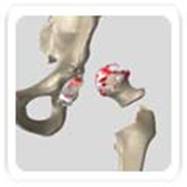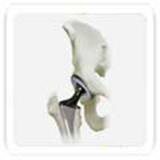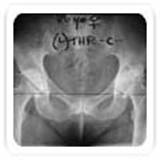- +91 9820036852
- sanjeev.jain@hiranandanihospital.org
- drsanjain@hotmail.com
Total Hip Replacement
How the Normal Hip Works
The hip is one of the largest weight-bearing joints. It consists of two main parts: a ball (femoralhead) at the top of thighbone (femur) that fits into a rounded socket (acetabulum) in pelvis. Bands of tissue called ligaments (hipcapsule) connect the ball to the socket and provide stability to the joint.
The bone surfaces of ball and socket have a smooth durable cover of articular cartilage that cushions the ends of the bones and enables them to move easily.
A thin, smooth tissue called synovial membrane covers all remaining surfaces of the hip joint. In a healthy hip, this membrane makes a small amount of fluid that lubricates and almost eliminates friction in hip joint.
Common causes of Hip Pain and Loss of Hip Mobility
The most common cause of chronic hip pain and disability is arthritis - Osteoarthritis, rheumatoid arthritis and post traumatic arthritis.
Osteoarthritis
usually occurs after age 50 years and often in an individual with a family history of arthritis. It may be caused or accelerated by subtle irregularities in how the hip developed. In this form of the disease, the articular cartilage cushioning the bones of the hip wears away. The bones then rub against each other, causing hip pain and stiffness.Rheumatoid Arthritis
is an autoimmune disease in which the synovial membrane (lining of joint) becomes inflamed, produces too much synovial fluid, and damages the articular cartilage, leading to pain and stiffness.Post Traumatic Arthritis
can follow a serious hip injury or fracture. A hip fracture can cause a condition known as avascular necrosis. The articular cartilage becomes damaged and over time, causes hip pain and stiffness.What is Total Hip Replacement?
In this surgery the damaged cartilage and bone is removed from hip ball and socket and replaced by new metal, plastic or ceramic joint surfaces to restore the alignment and function of hip joint. Many different types of designs and materials are currently used in artificial hip joints. All of them consist of two basic components: the ball component (made of a highly polished strong metal cobalt chrome molybdenum or ceramic material) and the socket component.
A non-cemented prosthesis has also been developed which is used most often in younger, more active patients with strong bone. The prosthesis may be coated with textured metal or a special bone-like substance, which allows bone to grow into the prosthesis. A combination of a cemented ball and a non-cemented socket may be used. I will choose the type of prosthesis that best meets your need.



